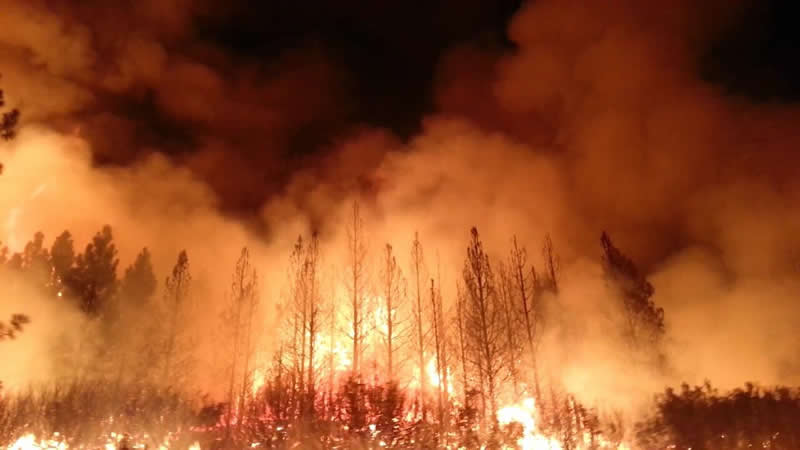In the wake of disastrous wildfires, crippling power shut-offs that have affected over 2.8 million people, and the bankruptcy of one of the world’s largest utilities, California is now planning major new investments in microgrids.
Pacific Gas & Electric, which filed for bankruptcy in January of 2019, is soliciting bids and fast-tracking development of 20 microgrids, aiming to complete them by September of 2020 at the latest. Ultimately, the utility is planning to build 40 microgrids in the near future, prioritizing areas that will be subject to frequent planned power outages. Navigant research estimates that there are currently about 100 microgrids either operating or under construction in California.

During the 2019 fire season, amidst widespread power cuts, PG&E created temporary microgrids powered by diesel generators to keep the lights on in vulnerable communities. But California’s new climate change mitigation and clean air initiatives are limiting options to generate power with diesel engines. That means that PG&E is under pressure to look for technical alternatives to diesel power, and hybrid renewable microgrid systems fit the bill.
PG&E is also under pressure from state political leaders to contain the impact of power shutoffs. With its new solicitation for 20 microgrids near substations in high-risk fire areas, the utility is aiming to cut the number of power shutoffs by a third compared to a few days in late October, when 941,000 customers suddenly had to make do without electricity.
Meanwhile, the Santa Barbara School District, which has also been subject to wildfire emergencies, is planning to build 18 microgrids that will make schools more resilient in the event of power shutoffs. The project will prepare the school system to provide emergency shelter for residents who are evacuated during natural disasters and implement electric vehicle charging infrastructure. The Clean Coalition and Sage Renewable Energy Consulting will conduct feasibility analyses for the distributed energy systems and manage the selection process for the microgrid developers. The estimated completion time for the project is 2022.
Blue Lake Rancheria microgrid powers on through fire season power shutoffs
Commissioned in 2017, the Blue Lake Rancheria microgrid is a shining example of the resilience microgrids can provide when grid power is unavailable. Located on a 100-acre reservation belonging to the Blue Lake Rancheria tribe, the microgrid powers tribal offices, a casino, hotel and emergency shelter with a 500 kW solar array, batteries and backup generators. According to the Washington Post, the $6.3 million microgrid continued to provide power to the community when PG&E cut power to Humbolt County residents last October to lower fire risk.

The tribe’s microgrid served approximately 10,000 people by taking in critically ill patients who required power for medical reasons, and keeping a fully functioning gas station and convenience store open to the entire community. The tribe estimates that the power they provided saved four lives during the outages. Tribal officials also provided temporary quarters and power to reporters, so the local newspaper could continue publishing.
Even when it’s not providing emergency power to the community, the Blue Lake Rancheria microgrid saves the tribe about $200,000 per year in utility bills by relying on renewable energy to generate its power.
Partly because of the example of microgrids like Blue Lake Rancheria, California legislators are working to relax the rules around microgrids. They want to make easier for private utility customers to take advantage of this rapidly emerging technology. New regulations are expected to be in place by the fall of 2020.
